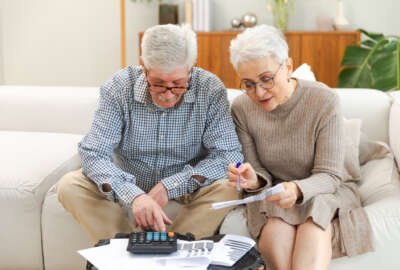Kenneth C. McNeill, a member of the Senior Executive Service, serves as the National Guard (NGB) Chief Information Officer (CIO) and Director of Command, Control, Communications & Computers (C4) Systems Directorate. He is the principal advisor to the Chief, NGB (CNGB) on all matters pertaining to C4, information technology (IT), information sharing, and information management (IM). He assists NG senior leadership by coordinating and facilitating employment of NGB C4/IT/IM capabilities in support of Homeland Defense/Defense Support of Civil Authorities (HD/DSCA) mission requirements. Mr. McNeill provides direction and guidance to align the NGB Joint Staff IT portfolio with the CNGB’s vision and the domestic operations mission.
In addition, Mr. McNeill is charged with setting policy and synchronizing NG-wide IT initiatives through coordination with the Army and Air National Guard staffs by leveraging forums like the NGB CIO Executive Council and the DoD CIO’s Military Department working groups.
During his time supporting the NGB, Ken spearheaded the Joint CONUS Communications Support Environment (JCCSE) which enables the reliable and timely flow of key information to support state and federal military activities, routine and otherwise, required for homeland defense, civil support, and other mission needs.
Prior to assuming the NGB CIO role, Mr. McNeill served as the Chief, Operations and Plans Division within Headquarters Department Army CIO/G-6. His office was the focal point for Army CIO/G-6 current operations as well as Army-wide C4 coordination during Overseas Contingency Operations (OCO) and combat operations. He was also responsible for synchronizing C4 programs and support agencies on major projects like establishing coalition networks in Afghanistan and Korea, instituting centralized Army-wide cybersecurity reporting, and improving CONUS IT infrastructure in preparation for training and deployment. Mr. McNeill assisted in the execution of an annual budget of over $3.0B ensuring Army Signal Forces were resourced to support forward deployed commands and emerging requirements.
Mr. McNeill completed his undergraduate degree at Bowie State University and was commissioned as a Signal Corps Officer in May 1983. He holds a Master of Science Degree in Organizational Communications from Bowie State University, and a Master of Science Degree in Strategic Studies from the Army War College. Mr. McNeill has more than 35 years of federal service as an Army Officer and DoD Civilian.
During his career, he earned numerous awards and decorations, most notably, the Superior Civilian Service Award, Defense Superior Service Medal, Legion of Merit, Bronze Star Medal, Joint Service Commendation Medal, National Guard Association of the United States Distinguished Service Medal, Joint Staff Identification Badge, and the Army Staff Badge.












